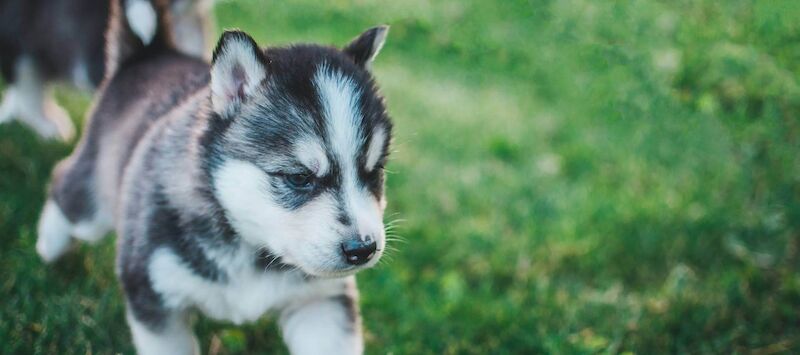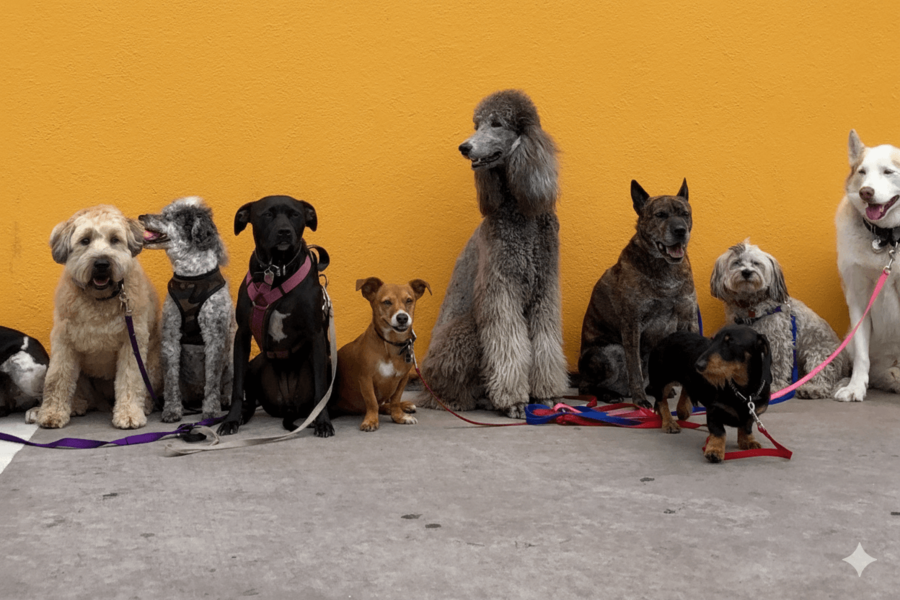
The Siberian Husky, often simply known as the Husky, is a breed renowned for its striking appearance and energetic personality. Known for its history as a sled dog and its friendly demeanor, the Siberian Husky is a favourite among dog enthusiasts in the UK and around the world.
History and Origin
The Siberian Husky originates from Siberia, where it was bred by the Chukchi people as a sled dog to pull loads over long distances in harsh conditions. These dogs were integral to the Chukchi way of life, known for their endurance, strength, and ability to work in teams. In the early 20th century, Siberian Huskies were brought to Alaska, where they played crucial roles in sled dog races and expeditions, further popularising the breed.
Physical Characteristics
- Size: Siberian Huskies are medium-sized dogs, standing about 51-60 cm at the shoulder.
- Weight: Males typically weigh between 20-27 kg, while females weigh slightly less, around 16-23 kg.
- Body: The breed has a well-balanced, athletic build, designed for endurance and agility. Their body is muscular yet lean, with a strong and straight back.
- Coat: Huskies have a double coat consisting of a dense undercoat and a longer, straight outer coat. This fur is designed to insulate against extreme cold. Coat colours range from black to red, with a variety of markings. Common colours include grey, sable, agouti, and red, often with white markings.
- Eyes: One of the most distinctive features of the Siberian Husky is its eyes. They can be brown, blue, or even one of each (heterochromia). The breed’s eyes are almond-shaped and expressive.
- Ears: The ears are medium-sized, triangular, and stand erect, giving the Husky a keen, alert appearance.
- Tail: Huskies have a bushy, curved tail that they carry over their back.
Temperament
Siberian Huskies are known for their friendly and outgoing nature. They are social dogs that thrive in the company of people and other dogs. Their playful and energetic temperament makes them great companions, especially for active families.
However, Huskies are also known for their independence and strong will. They can be somewhat aloof and stubborn, making training a bit of a challenge. Consistent, positive reinforcement methods work best, and early socialisation is crucial to ensure they grow up to be well-adjusted adults.
Due to their high energy levels, Huskies need plenty of exercise and mental stimulation. They enjoy running, hiking, and engaging in various activities that challenge their intelligence and physical capabilities.
Health and Lifespan
Siberian Huskies typically have a lifespan of 12-15 years. They are generally healthy dogs but can be prone to specific health issues:
- Hip Dysplasia: A common issue in many breeds, hip dysplasia can cause pain and mobility problems. Regular check-ups and maintaining a healthy weight can help manage the risk.
- Eye Conditions: Huskies can suffer from hereditary eye conditions such as cataracts or progressive retinal atrophy (PRA). Regular eye examinations are recommended.
- Hypothyroidism: This condition involves an underactive thyroid gland and can be managed with medication.
Care and Grooming
- Exercise: Siberian Huskies are high-energy dogs that require substantial exercise to stay healthy and happy. Daily activities should include long walks, runs, or play sessions. They also benefit from having a securely fenced area where they can run freely.
- Grooming: Their double coat requires regular grooming to manage shedding and prevent matting. Huskies shed heavily twice a year, known as "blowing coat," during which they will need more frequent brushing. Regular brushing helps to remove loose fur and keep the coat healthy.
- Feeding: A balanced diet tailored to their age, weight, and activity level is essential. Huskies are prone to weight gain if their diet and exercise aren’t properly managed.
- Training: Huskies can be challenging to train due to their independent nature. Consistent, positive reinforcement methods work best. Engaging them in activities like agility or obedience training can be beneficial.
Living Conditions
Siberian Huskies are best suited to homes with plenty of space and access to outdoor areas where they can run and play. They thrive in environments where they receive ample exercise and mental stimulation. While they can adapt to living in a house or flat, they must have regular opportunities to burn off their high energy levels.
Huskies are known escape artists and can be quite resourceful when it comes to finding ways out of secure areas. A secure, well-fenced garden is crucial for their safety.
Conclusion
The Siberian Husky is a breed that combines stunning looks with a vibrant personality. Their history as sled dogs is reflected in their endurance and playful spirit. While they require substantial exercise and consistent training, their affectionate nature and striking appearance make them a cherished companion for those ready to meet their needs. With proper care and attention, a Siberian Husky can be a loyal, energetic, and loving member of the family.
You can take a look at all of our Siberian Huskys for sale or feel free to contact us if you have any questions.
